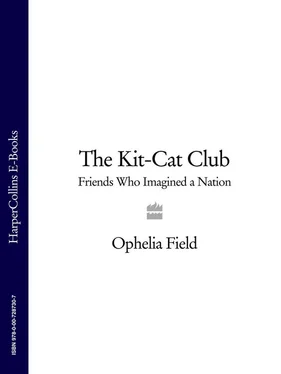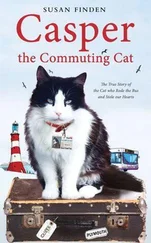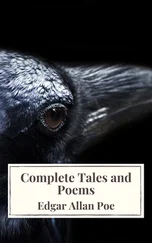Dryden's Witty Club had been attacked for being self-serving, selfimportant and malicious. The Kit-Cat Club now became the new target for such envy and resentment, as it sat and decided what writing should go to Tonson's presses and what into the tavern fireplace. Ned Ward was among those who questioned the Whig lords' right to sit as the self-styled custodians of English literature and who complained that the Kit-Cats, unlike Dryden, now made the critical process too Whiggishly ideological: ‘[T]hey began to set themselves up for Apollo's court of judicature, where every author's performance, from the stage poet to the garret-drudge, was to be read, tried, applauded, or condemned, according to the new system of Revolutionary Principles.’ 75
Soon the Kit-Cats were to give the same ideological treatment to other art forms, including architecture.
During the summer of 1699, while Somers and Montagu were visiting Somerset and others at their country seats, and several fellow Kit-Cats were touring France, Vanbrugh—who had seen enough of France during his long captivity there—toured the great houses of northern England. He travelled by high-speed ‘calash’ (a light twowheeled carriage with a removable hood) and stayed with at least two Kit-Cat friends: William Cavendish at Chatsworth for four or five days, then, in July, with his distant kinsman, Carlisle. Carlisle's membership of the Kit-Cat Club rested on his proven influence in the 1695 Cumberland election, and on the fact that, though Carlisle's Howard ancestors were prominent Catholics, his grandfather and father had been Whigs and his own Whiggery was fervent. Carlisle's love of books would also have recommended him to Tonson and the Kit-Cat collectors; he catalogued his family's libraries and added to them constantly. In the summer of 1697, Carlisle had stayed with the Somersets at Petworth and admired it with an envious eye, developing his own ambitions to become an architectural patron—ambitions that would be spectacularly realized in his later building of Castle Howard.
By 1699, Carlisle had been appointed a Gentleman of the Bedchamber—a Court place to add to his other honours: Governor of the town and castle of Carlisle, Lord Lieutenant of Cumberland and Westmorland, and Vice Admiral of the seacoasts for those two counties. Thinking his future income secure, and eager to lend additional status to his title, which dated back only as far as his grandfather, Carlisle decided to build the Howard family a new seat, on a scale that would allow him to entertain royalty.
Carlisle had already invited the architect William Talman to develop plans for a house at Henderskelfe, northeast of York. Talman, who designed much of Chatsworth, was Carlisle's first choice because he was the King's favoured architect, and the project could demonstrate shared tastes with William III in one of the few artistic spheres where the King took interest. By July 1699, however, when Carlisle invited Vanbrugh to the same site, it appears Talman had been dropped. Whether Talman's designs simply disappointed Carlisle, or whether Kit-Cat favouritism displaced a more qualified man, is hard to know. Talman, at any rate, thought he had been unfairly dismissed and threatened to sue.
The ebullient Vanbrugh, who seemed to have no fear of failure despite his near-total lack of architectural experience, described his earliest designs for what would become ‘Castle Howard’ to one of the Kit-Cat patrons as being for ‘a plain low building like an orange house’. 76 This does indeed describe Vanbrugh's earliest, amazingly plain sketches. Such consultations with Whig patricians were probably the source of the legend that Vanbrugh designed Castle Howard on a napkin or scrap of paper during a Kit-Cat Club dinner. It is true that Vanbrugh designed the house by committee—a way for Carlisle to enjoy the prestige of undertaking such a project long before there was a finished product to show off—but there is no specific Kit-Cat dinner that can be credited with the house's conception. As Vanbrugh wrote, ‘There has been a great many Critics consulted upon it since, and no objection being made on't, the Stone is raising and the Foundations will be laid in the Spring [of 1700].’ 77 This prediction was, as Vanbrugh's predictions of time and cost almost always were, unrealistic. The foundations were not laid until the spring of 1701. First the villagers and small farmers of Henderskelfe had to be evicted and the property enclosed. (A contemporary said Carlisle was zealously concerned for those on his lands, but this was more a concern for their obedience at the polls than their rights.) During the two years between the first designs and the first work on site, the Kit-Cats were consulted and various elaborations added.
King William also reviewed the plans in June 1700. As with a poem dedicated to a monarch or noble patron, so architecture was not only an expression of status and power but also a bid to obtain them. To build on such a scale, albeit in the Continental baroque style, was seen as a patriotic act that ought to bring cultural prestige to the nation and royal favour to the owner. The English baroque expressed the ‘communal will’ of the Kit-Cat Club in architectural form, taking ‘its emotion from the sense of grandeur and confidence enjoyed by the old Whigs of the 1688 revolution’. 78 Carlisle was 30 when he commissioned Castle Howard, five years younger than Vanbrugh. So, although of the ‘old Whig’ generation, Carlisle acted in the ambition of youth. He was the first and most important of six Kit-Cat architectural patrons who would help make Vanbrugh into one of Britain's greatest architects.
For all his social climbing, Vanbrugh knew how to pull someone else up the ladder behind him. He introduced the experienced builder and designer Nicholas Hawksmoor to Carlisle, and got him a salary almost twice what the average craftsman was paid. Vanbrugh was not paid at all; his rewards consisted of jobs and sinecures. Not only did this shift the expenditure from Carlisle's pocket to the Crown, but it also permitted discretion within the Club: the tactful illusion that members were not divided into employers and employees.
Vanbrugh used the time between first design and commencement of building, while living on half-pay from the Second Marine Regiment, to gain some little experience by building himself a house in London. In July 1700, soon after he reviewed the plans for Castle Howard, the King granted Vanbrugh permission for what would be the first of a series of private houses on the burnt-out ruins of Whitehall Palace. Private property was replacing royal property in much the same way that privatized aristocratic patronage was replacing royal patronage.
Vanbrugh's townhouse was built quickly during 1701. When complete, it served as a life-sized demonstration model and advertisement for his skills. Jonathan Swift (by this time a clergyman and published author, ambiguously seeking Court Whig favour in London while writing anonymous lampoons against the same Whigs) described it as ‘resembling a Goose Pie’ and sneered at Vanbrugh turning to architecture ‘without Thought or Lecture’. He suggested Vanbrugh had been inspired by watching children build houses of cards and mud. Swift also emphasized, enviously, that the architect of the ‘Goose Pie’ house had enjoyed a meteoric professional and social ascent, thanks solely to whom he knew in London high society: ‘No wonder, since wise Authors know, / That Best Foundations must be Low.’ 79
At least Vanbrugh was finding that his architectural designs, no matter how lusty, were not, like his plays, subject to accusations of blasphemy and immorality. Neither Vanbrugh nor Congreve stopped writing as abruptly as sometimes portrayed, but both lost interest in dramatic writing at the height of their literary careers thanks in part to unrelenting pressure from the Collierite censors. When Betterton's company revived Congreve's 1695 hit Love for Love in Easter 1701, a legal action was brought against the players for ‘licentiousness’, 80 despite the fact that the production had been staged for a Christian charity (for ‘the Redemption of the English now in Slavery…in Barbary’ 81 ). Similarly, when Vanbrugh's Provok'd Wife was revived, both the author and the players (including Bracey) were charged with using indecent expressions and sentenced to fines of £5 (almost £700 today) each. 82 The old fear of the semi-illiterate audience acting as judge and jury was becoming a sinister reality.
Читать дальше












